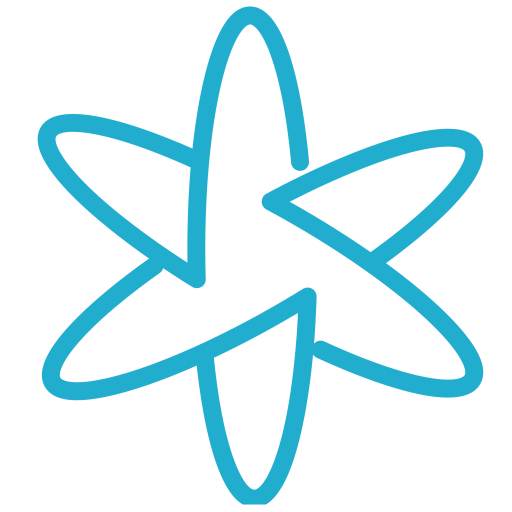What is Quantum Annealing in a Simple Response?
If you want to deepen your knowledge about quantum computing (QC), chances are that you are going to read about quantum annealing (QA) relatively quickly and ask your self, “What is Quantum Annealing?”. With many companies investing resources, time and efforts in technology, it makes perfect sense that you increase your understanding around this model. There are two key Quantum Computing models – these are the universal gate model and quantum annealing model. In fact, some researchers suggest that there is a third model known as analog quantum. However, just as the title suggests, this article will primarily focus on Quantum Annealing, so, continue reading to learn more.
Universal Gate Model vs Quantum Annealing
Think of the logic gate in computing as the typical gate used to stop unauthorized people from having access to a house or an office. In today’s digital devices, gates act as openable blocks that determine when electrical charges can or cannot flow through a circuit. Based on their states (either open or closed), they accept inputs or outputs. Examples are AND and OR gates. Similarly, in QC technology, the gate is the interaction of qubits. But then, things are a little different here because QC logic gates are reversible, meaning that you can reverse their states. The common gates in QC are Hadamard gates and Toffoli gates. With respect to the level of control, in the logic gate model, QC engineers can manipulate the evolution of quantum states over time – this is difficult though. Also, it is hard to get the qubits to work together. Note that if they don’t work together, no piece of quantum machine can be built. However, physicists have been able to develop critical algorithms that enable them to achieve that goal. These algorithms are Shor’s algorithm and Grover’s algorithm.

On the other hand, the QA model is a method used to determine the minimum energy state of something. Better still, it is a method used to arrive at the best approach for tackling a specific puzzle. To arrive at a fully optimized solution, certain properties of quantum physics (such as superposition, tunneling, and entanglement) are applied. Unlike the universal gate model where developers struggle to keep qubits stable, QA designers don’t struggle to keep qubits stable, which means they build as many qubits as possible. Here, developers harness the natural evolution of quantum states by configuring the pathways to correspond to their goal, thereby culminating in the desired goal. Because the developer can harness this natural evolution, it becomes easy to scale up qubits in QA devices.
Optimization and Probabilistic Sampling Problems
With the QA technology, two major problems can be solved; these are optimization problem and probabilistic sampling problems. Once again, in QA model, the aim is to arrive at the minimum energy level, which serves as the best solution. Optimization problems are commonly expressed in energy levels. In other words, energy levels represent each state of the system. To stimulate the states, the computer takes advantage of superposition and entanglement of qubits. Afterward, the least energy result is obtained, thereby giving you the most likely solution or the optimal solution.
On the flipside, probabilistic sampling or randomization is a method that uses random selection to determine the best result. For this method to work, you have to set up some procedures that assure you that different units in a design are likely to have equal probabilities of being chosen. Here’s the thing, the system samples for many low energy states and characterizes the shape of the energy landscape. With probabilistic sampling, you get an idea of what your models look like and you can improve them later in order to get a better result. Probabilistic sampling is often used in machine learning.
In a nutshell, optimization problems and probability sampling problems are hard to solve in classical computers. Nevertheless, QC machines can seamlessly tackle them. What’s more, QA model solves the problems better because unlike the universal gate model, the QA model allows developers to harness the natural evolution of quantum state and build stable devices with large-scale qubits.
Real-World Application of Quantum Annealing
Now, let’s use a simple analogy to clarify how optimization problems are solved in the real world. Let’s say that a large logistic company has a fleet of trucks and is looking for the best possible route for delivering its customers’ products. This is a challenge because there could be many routes for delivering these products. However, the best or shortest route is that which helps them to significantly save time, resources and efforts. Due to the massive number of trucks, routes, traffic and other inconsistencies with the road network, they cannot solve this problem using conventional computers in a timely manner.
So, let’s also assume that one of their trucks has to traverse 50 cities, deliver products to customers and return to the company through the shortest path. To find the shortest path, the fleet manager has to work out what it takes to cover all these 50 cities through all the possible routes. This is difficult, so it is where a QA model comes in. With the QA model, you can work out the distance between each city as an energy parameter. Thanks to entanglement – the qubits alter each other’s state and each solution creates a new state. To arrive at the optimal solution, the QA model now calculates the lowest energy level between the states and that gives you the optimal solution (shortest path).
Sizes of Quantum Annealers and Gate Model QC
As you already know, the size and capacity of quantum machines are measured in qubits. From fascinating breakthroughs in the QC industry, one can conclude that QA-focused tech companies are conspicuously beating their universal gate model competitors in the quantum supremacy race. For instance, in 2020, D-Wave System launched its business-oriented 5000-qubit quantum machine known as Advantage. With Advantage, enterprise users can deal with large and complex commercial applications and support similar apps that run in the production ecosystem. Other Advantage System’s functions include experimentation and running small proofs of concept. The Canadian company is also working round the clock to launch 7000-qubit Advantage2 by 2023 or 2024. In precise terms, the tech company can scale up the QA model and develop larger qubits as seen in Advantage.
In contrast, IBM, Google and other tech giants are mainly focusing on the universal gate model. Today, the most powerful gated QC machine is IBM’s 127-qubit Eagle. By cramming more and more qubits into its new chip architecture, the American tech giant has developed the next-gen machine. But then, because it is difficult to keep qubit stable and get them to work together, the big tech players in the gate model haven’t attained 200 qubits yet, whereas their QA counterparts have surpassed 5000 qubits. Remember, the more the qubits, the more useful and powerful the QC machine. Sure, you now know what quantum annealing is!
